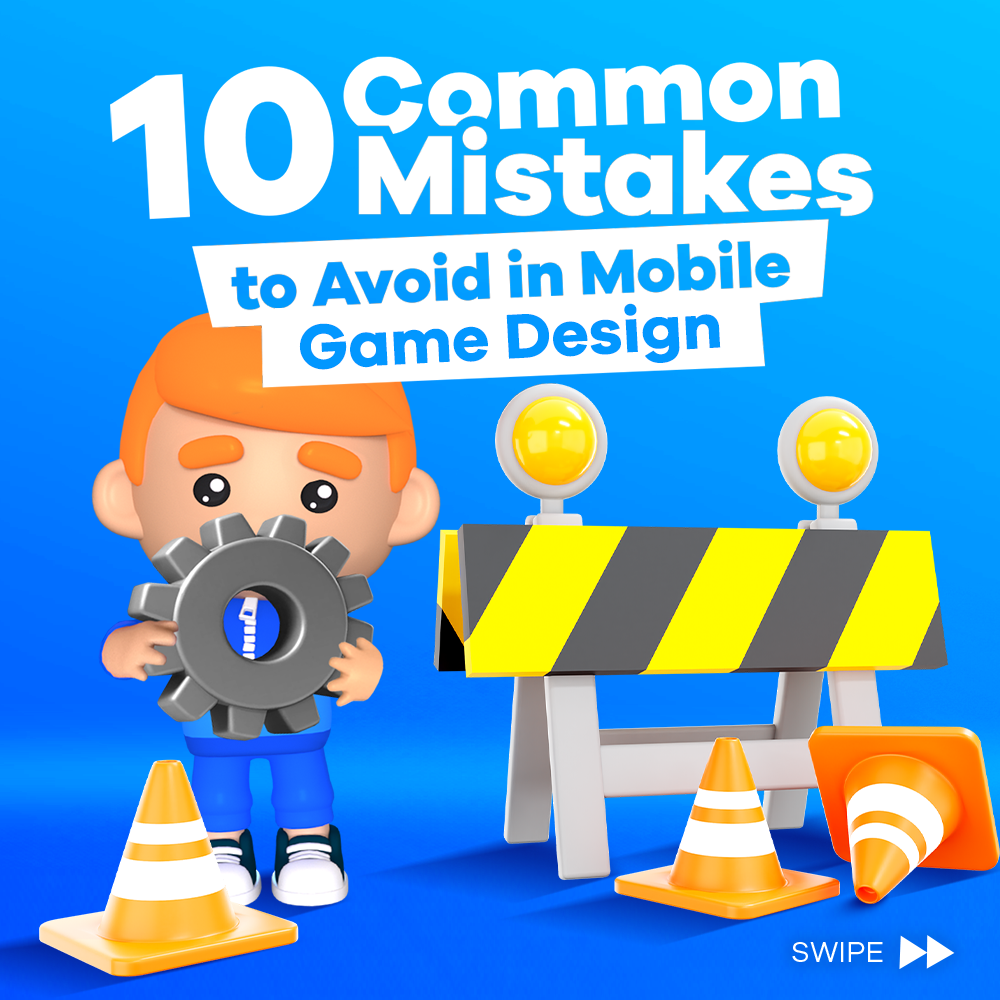
Shweta Pakhare – Apr 24, 2024
Introduction
Imagine this: You’re a game developer and you’ve just created a mobile game that you’re sure is the next hit in the market. What you might not have realized is that you might have fallen victim to common mistakes made by game devs in mobile game design.
Creating a successful mobile game involves more than just coding and design; it requires something crucial: the ability to immerse players in a captivating user experience. To achieve this, game developers must steer clear of common design pitfalls that can detract from the overall quality and appeal of their games. In this article, we’ll explore ten prevalent mistakes in mobile game design and provide insights into how to avoid them.

1. Poor User Experience
One of the most critical aspects of mobile game design is ensuring a seamless and enjoyable user experience. Because this is your best first impression to your users! Failing to prioritize intuitive controls, clear navigation, and responsive gameplay can lead to the absolute no-go: which is frustrated players and negative reviews. This is exactly why mobile game devs should conduct thorough testing to identify and rectify any user experience issues prior to launching the game.
2. Messy and Disordered Interfaces
Cluttered and disorganized interfaces can overwhelm players and impede their ability to engage with the game. Designing clean, intuitive interfaces with clear visual hierarchy and navigation can significantly impact the overall user experience. A tip is to make sure the users stay engaged in your game is for your user interface UI to be interactive with engaging game components and a low loading speed.
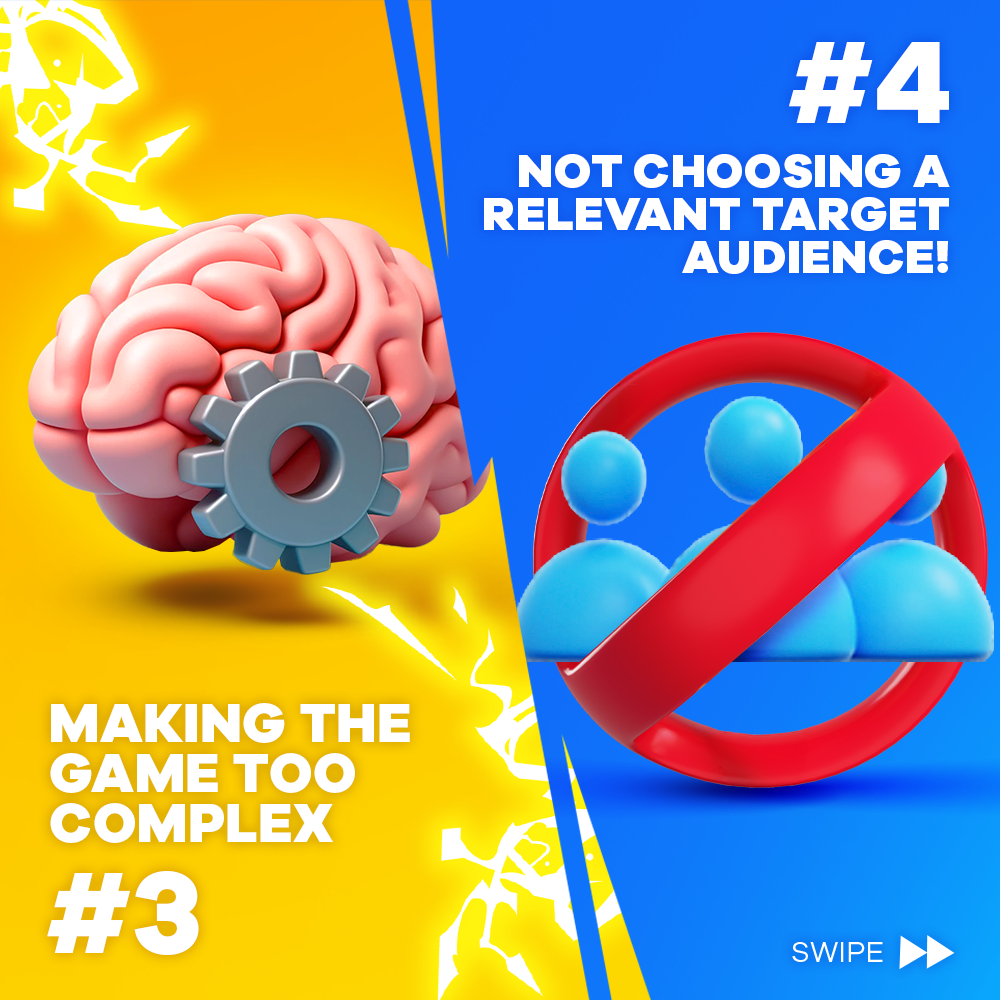
3. Making the Game Too Complex
Hypercasual mobile games are naturally easy to play and known for their fun game mechanics. While some complexity can add a level of depth to a mobile game, overwhelming players with convoluted mechanics and a steep learning curve can lead to user disengagement. Striking a balance between depth and accessibility is crucial to cater to players.
Remember the phrase: Simple to grasp yet difficult to master!
4. Not Choosing a Relevant Target Audience
Target the right audience! When creating any product, it is essential to know who you’re selling the product to. So it goes unsaid how vital it is to understand the preferences and expectations of the target audience when designing a game that resonates with the right players. This could mean doing a thorough market analysis and drawing the sketch of what, where and who your target group is. What their needs, hobbies and pain points are the very details that will help you understand how to segment your audience and market the game. It can also help with deciding on a format and placements of your ads.
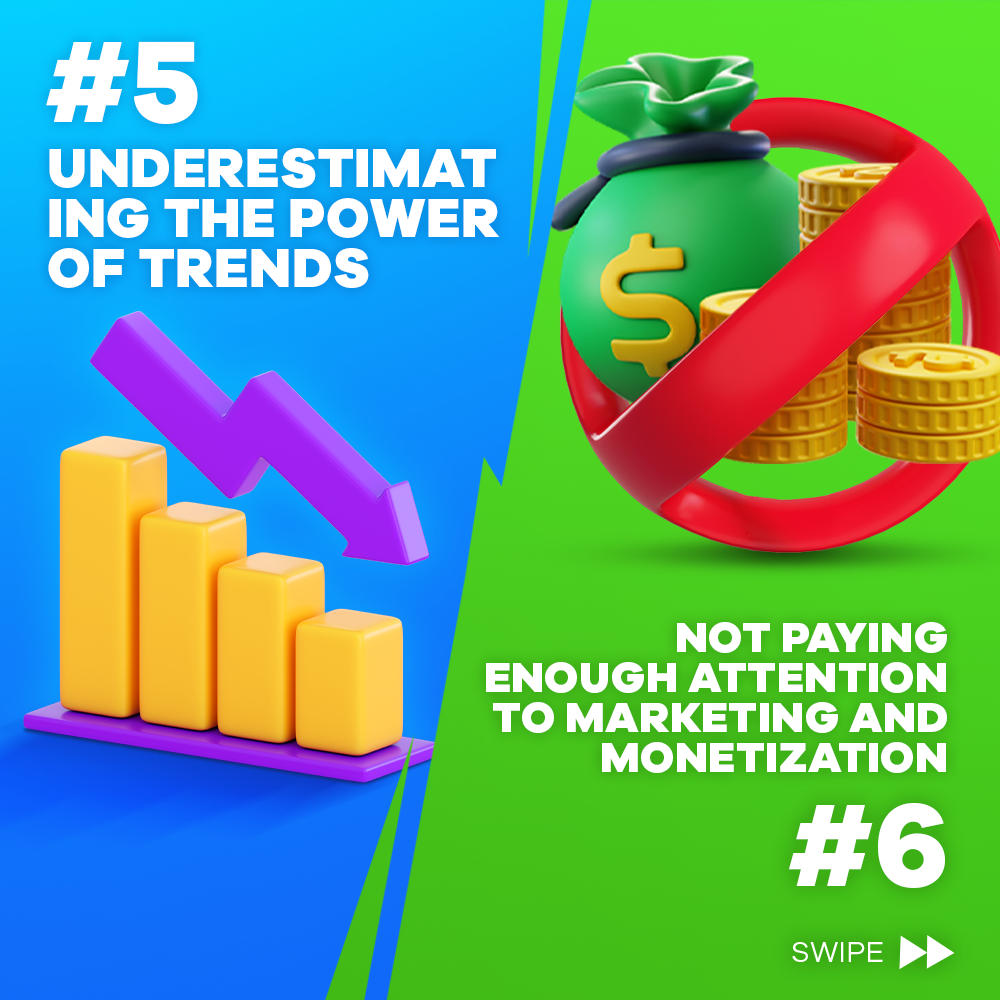
5. Underestimating the Power of Trends
Match-3, puzzles, action, casino… there are endless trends that come up every now and then. It can be an advantage to understand the market trends and have a mobile game that resonates with it. The report from Adjust and Applovin also mentions that racing and simulation games have been placed on the top of the charts. The installs witnessed the growth by 61% and 53% YoY, respectively. They are followed by arcade games followed with 38% and 19% increases in installs and sessions. Trends are not only found within the market itself though, it is worth it to keep a close eye on social trends as well like mainstream entertainment, social networks, toys & fashion, major events, etc.
6. Not Paying Enough Attention to Marketing and Monetization
Developers often focus solely on game mechanics and aesthetics, overlooking the importance of a well-rounded marketing strategy and a sustainable monetization model. Integrating marketing and monetization considerations into the early stages of game design can be the make or break for long-term success. The Gaming App Insights Report from Adjust and AppLovin stated that gaming in-app revenue is increasing! In January 2024, the growth of in-app revenue witnessed an increase of 13% YoY.
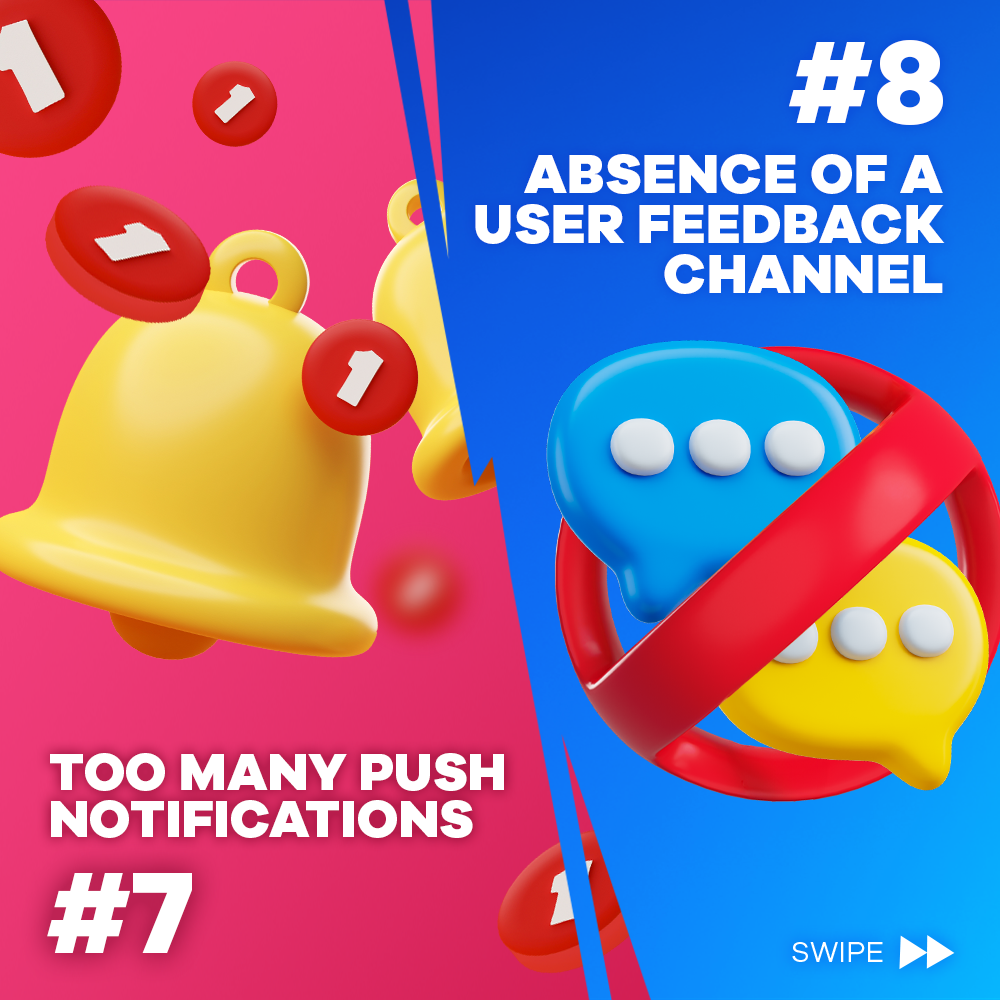
7. Too Many Push Notifications
While push notifications can be a valuable tool for player engagement, bombarding users with excessive or irrelevant notifications can be an annoyance and lead to the dreadful: app uninstalls! Game devs should implement a thoughtful and targeted approach to push notifications to avoid alienating their player base.
8. Absence of a User Feedback Channel
User feedback is one of the things that can be made readily available through mobile game apps. Fostering this kind of open communication with players and gathering insights drives iterative improvements to the game. Try to incorporate a user feedback channel, such as in-game surveys or community forums. This will allow developers to understand player sentiments and address their concerns effectively.
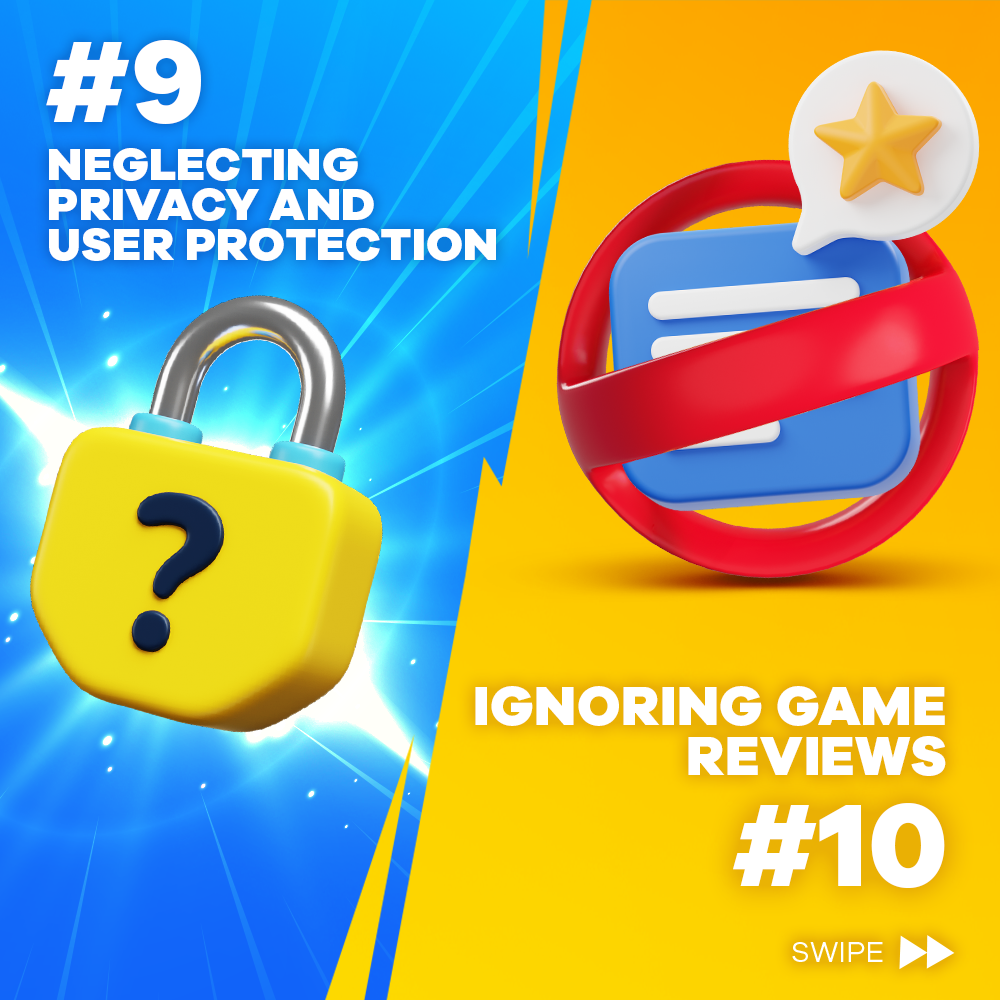
9. Neglecting Privacy and User Protection
In an era of heightened awareness around data privacy, it is a huge risk to not prioritize user privacy and protection. This can erode your game reputation and inevitably your players’ trust. So implement a robust privacy measure and transparent data practices! This will not only safeguard player information but also cultivate a sense of trust and credibility.
10. Ignoring Game Reviews
Player feedback, as reflected in game reviews, can offer invaluable insights into the strengths and shortcomings of a game. Ignoring or dismissing game reviews deprives developers of an opportunity to identify areas for improvement and refine the game based on player feedback.
Conclusion
Mobile game design is an extensive process which concerns various aspects. Often, in this process, mistakes can be made and go unnoticed which can hinder what would otherwise be a compelling and successful gaming experience. It’s best practice to avoid common mistakes such as underestimating the power of trends or understanding the target audience, neglecting user experience and failing to integrate thoughtful marketing and monetization strategies. Developers can enhance the appeal and longevity of their mobile games. Additionally, fostering open communication with players, prioritizing user privacy, and leveraging player feedback can further contribute to the success of mobile game design. Ultimately, by steering clear of these pitfalls, developers can take the quality of their games to new levels and establish a strong connection with their player base.
Get in touch with us now to start reaching millions of players worldwide:


